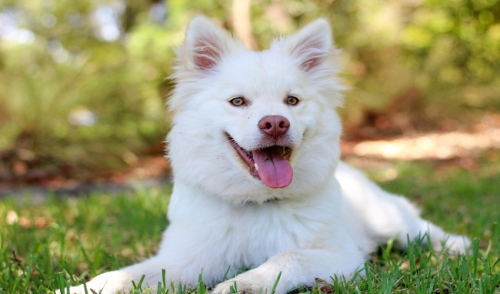
No dog owner likes to discover that their furry friend has left little splashes of urine on walls, furniture, draperies and other surfaces. This type of territorial marking is instinctual and very common, but if you understand your dog's reasons for urine marking, you can take steps to correct this unwelcome behavior.
Marking or Urination?
Using urine to mark territory is not the same as regular urination. Urine marking is only a small amount of liquid, and dogs will mark many different areas to spread their scent widely. Vertical surfaces are marked more frequently because they show dominance more readily and are easier to smell. Regular urination, on the other hand, is a much larger quantity of liquid and may be on a vertical surface or on the floor. Even a housebroken dog may occasionally use urine marking.
Both male and female dogs may use urine marking to claim their territory, show their dominance in a pack hierarchy, advertise their readiness for a mate or just to communicate with other dogs. Mature, unaltered dogs are more likely to lift their legs, and urine marking is more common in homes where there are multiple dogs.
Putting a Stop to Urine Marking
There are several steps dog owners can take to minimize or eliminate urine marking behaviors.
- Neutering
Spaying or neutering a dog at the earliest opportunity will greatly reduce urine marking, but animals of any age can be altered and the behavior will become less common. Lower hormone levels after a dog is spayed or neutered help minimize the need to mark territory and reduce competition between different animals that may wish to show dominance.
- Training
Just as you housetrained your dog, you can also train them not to urine mark indoors or in unwanted areas such as a garden. Watch your dog closely, and when they begin sniffing, circling or otherwise showing signs of wanting to mark, correct them firmly with "No Pee!" or a similar command. Constant vigilance will be necessary until they learn the command well.
- Reward Proper Marking
Even as you deter your dog from raising its leg in unwanted areas, be sure to praise and reward them for marking or urinating in appropriate locations. This will reinforce their positive behavior and provide comfort and confidence so they will mark only in approved or appropriate spots.
- Clean Thoroughly
When your dog does mark a spot inappropriately, clean the area thoroughly with a 50/50 solution of vinegar and water. This will remove the odor so your dog is not reminded that they should mark in the same spot, and the strong scent will deter their sensitive nose from investigating too closely. Other strong odors, such as bitter or citrus-based sprays, can be applied to marked surfaces after cleaning to provide additional deterrents.
- Be a Leader
Many dogs use urine marking because they are testing their dominance, or because they are feeling anxious and need to feel confident in their own space. If you continually reinforce your position as your dog's pack leader with strong training – for meals, walks, manners, play, etc. – your dog will feel more comfortable and will be less likely to mark different spots.
- Provide Proper Introductions
Some dogs use urine marking when anything new enters their territory – a person, piece of furniture, pet, etc. To make the transition easier for your dog, allow them to sniff the new item or person thoroughly, mixing your scent with the new one so the dog understands that you approve of the new item and it is welcome. This will help your dog accept the newness without a need for urine marking.
Using multiple techniques to correct your dog from lifting his leg will be most effective to keep this problem behavior from recurring. The occasional marking or accident may still occur, but with good training and a good relationship with your pet, you can correct leg lifting with ease.

Comments